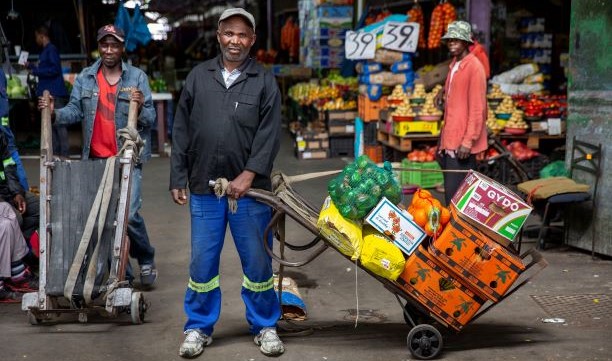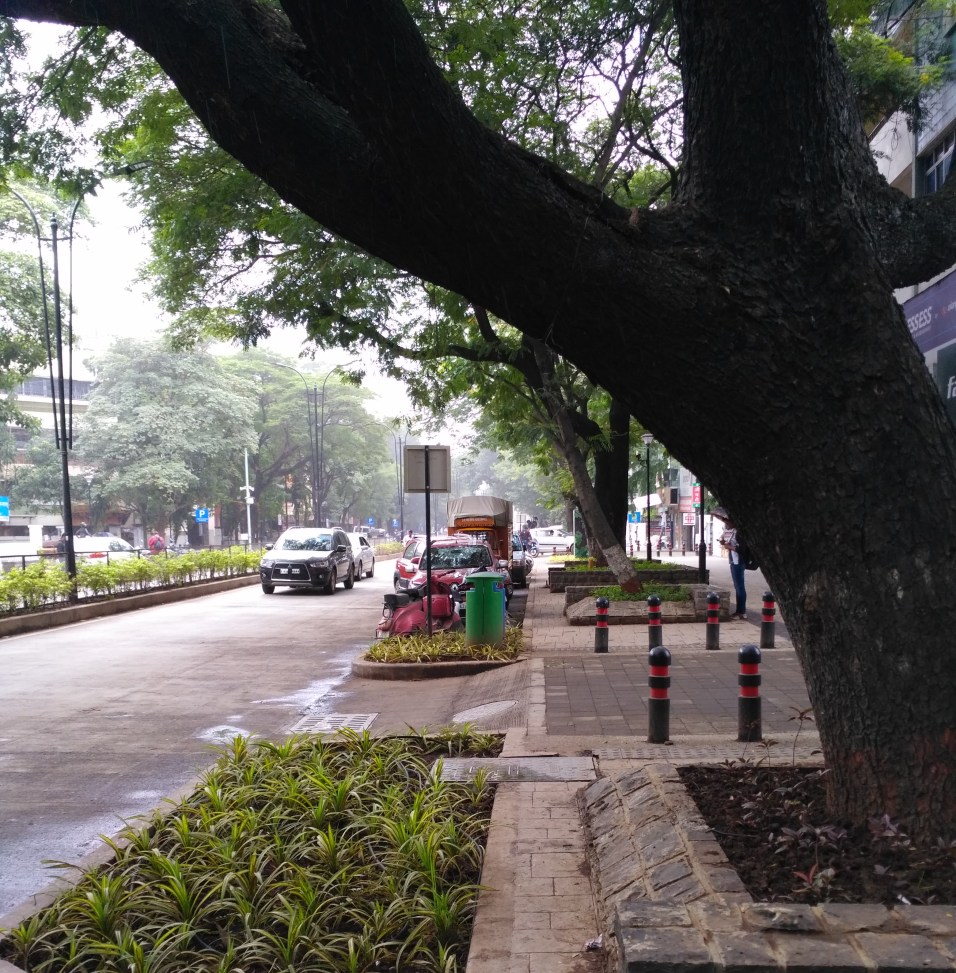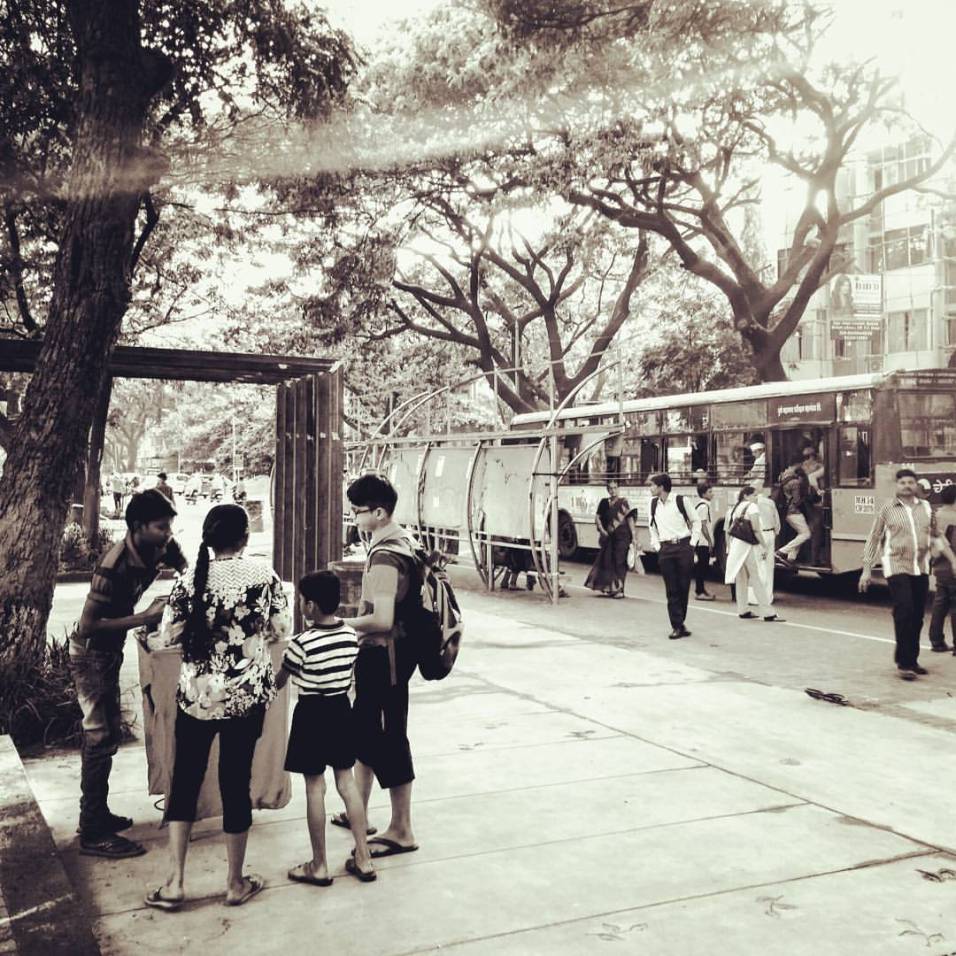(This blog forms part of a series, see Part 1: Os’gadla; an unrecognised, yet extremely robust workforce in transit)
‘By 2030, eThekwini Municipality will be Africa’s most caring and liveable city.’
This is the IDP vision for eThekwini – the municipality in which Durban is situated.
In order to make this ambitious goal a reality, the city’s most vulnerable citizens need to be considered in urban planning and design. There are few more vulnerable citizens in the city of Durban than those who work in the informal economy, and fewer still than those whose informal work involves traversing the city’s congested streets on foot, with up to hundreds of kilograms of stock in tow, such as the os’gadla (isiZulu for “transporters of goods”) who are also known as barrow operators or trolley pullers. These informal workers form an essential part of the functioning of Durban’s inner-city economy yet navigating the city is a dangerous daily task for them. In fact, getting around as a non-motorised transport (NMT) user is a rather dangerous task for everyone living in urban areas. Unfortunately, ‘in recent decades, South African transport policy exclusively prioritised the extension of its road network, which in turn promoted private transport in cities’ (Department of Environmental Affairs, 2019). This has led to the creation of urban areas which are highly un-pedestrian-friendly, and South African cities are not the exception. According to the United Nations Centre for Regional Development (2018), globally ‘every 30 seconds one person dies in a road accident’ and ‘more than a quarter of the people killed in road accidents are pedestrians; a number increasing steadily due to a tragic lack of investment.’
The local eThekwini Transport Authority developed a Complete Streets Guidelines document for Durban, which aims to aid the eThekwini transport sector to ensure that it meets the needs of all those who use it. The notion of Complete Streets pertains to ‘roads designed to accommodate diverse modes, users and activities including walking, cycling, public transport, automobiles, nearby businesses and residents. Such street design helps create more multi-modal transport systems and more liveable communities.’ (City of Johannesburg Complete Streets Design Guideline pg3)
Informal workers who rely on NMT for their livelihood strategies such as barrow operators, informal recyclers, water carriers and itinerant traders, are not directly mentioned in the document, but if the idea behind Complete Streets is a safe, user-friendly space for all types of commuters, then the needs of these workers need to be considered when the idea is implemented. The following paragraphs will explore a few examples of cities that are taking positive steps to create urban spaces in which NMT users are prioritised.
Share the Road is an initiative which is aimed at reducing the number of bicycle accidents through the promotion of ‘good road sharing’ techniques. They hold workshops for cyclists and for heavy vehicle drivers in order to make the roads safer. In Kenya, they collaborated with the government to amend policy so that walking and cycling facilities are a part of all new urban road projects in the country.
In the Chinese city of Guangzhou, there are areas in which NMT is prioritised through paving; asphalt is generally associated with motor vehicles, but the use of tiles or bricks automatically signals a shift towards a pedestrian-friendly spaces and thus causes cars to drive slower. Another strategy that has been applied in these areas is the removal of sidewalks; pedestrians walk all over the street, so drivers are forced to be more cautious.
Mexico City’s Mobility Law stipulates that pedestrians sit at the top of the mobility hierarchy and private cars sit at the bottom.
Bogota, in Colombia, is a city often celebrated for its progressive NMT policies and infrastructure. CicloRutas is a cycle-lane network which now spans close to 400 kilometres. Pune, in India, followed suit and has created a network of streets with demarcated zones for different types of transport, ensuring the safety of NMT users. They are expanding these networks each year, and the city is hailed as a complete streets champion.
The goal of Complete Streets is not only to create safe and environmentally sustainable transport networks, but also to boost economic growth. Research in Asian cities has shown that NMT schemes ‘promote business opportunities’ (UNCRD, 2018). Context is, as always, a vital factor with regard to urban design projects and Durban’s inner city is different to the city spaces in which the above projects have been implemented. These projects can however, be used as precedents for the creation of an urban transport system that benefits NMT users as much, or more, than it benefits motor vehicle users.
Since the informal sector is a significant part of South Africa’s (and the rest of the world’s) economy, improving the mobility of informal workers will boost the sector. Our particular focus is on creating spaces in which informal workers who make use of NMT – barrow operators, informal recyclers, water carries and itinerant traders – can have their work dignified through urban design and policy interventions which validate their place on the streets.
[ Feature image: Barrow operator at the Early Morning Market, Warwick Junction. Photo: Jonathan Torgovinik (2018) by permission]





